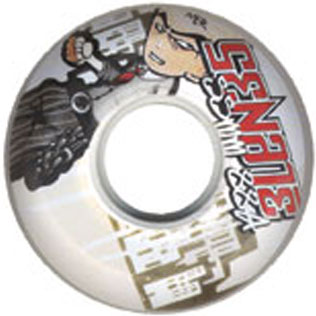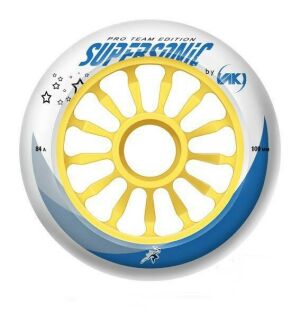Types Skates Wheels
The wheels of the skates are perhaps the most important part of these. It is the part that gives us stability, or speed, or acceleration, or grip, always depending on that we use wheel.

The skates rues usually characterize pro three values: his hardness, diameter and profile. It is important to choose the combination adapted for the use that we are going to give him to our wheels.
Skate Wheel hardness
It measures itself in 'A' preceded of a number. The most common scale goes from 74th even them 90th. Being them 78th very soft wheels and them 90th very hard wheels. The soft wheels have a major grip, in addition to muffling better the imperfection of the area. By this they are advised for his use of street (unlike his use in covered track). The soft wheels wear out before a few hard wheels. The hard ones have a major durability but minor grip, going so far as to slip sometimes even on the curves if one is not used.
Normalemente uses hard wheels for skating in ramp, (in skate park), and softer wheels in fitness, recreative and hockey.

Diameter of the wheels
It is the size of the wheel and it measures itself in millimeters. You can find wheels between 60mm and 110mm. The normal thing and the advisable thing for fitness or to begin skating there are a few rather medium wheels throwing kidlings. Enter 74 and 76mm is the ideal thing. The bigger the wheels the major speed top nso will give, but the more difficult it will be to accelerate starting from stopped. You prop, to major major size make difficult to maneuver. It is not necessary to go to mostruos of 100mm or 90mm, some 84mm are already quite big as an absence of maneuverability is evident compared with some 76mm.
This absence of maneuverability is characterized by the sensation of 'going on rails' on having skated. This is, while you go in straight line, a few big wheels will give you stability, will muffle the imperfection of the area and will make to vibrate little the skate. (To high speeds the vibration uede to go so far as to turn out to be very annoying or dangerous). But in return one has the sensation of going on rails or on skies: it will be difficult to you to turn quickly.
In general, it uses very small wheels (60-70mm for skate park or aggressive: they will make you skate closer to the soil, with what you gain great stability at the time of raising and lowering ramps, grindar curbs and copy and to jump. For fitness and recreative, especially if you are starting, he tries not to buy a few skates with a few too big wheels. More kidlings, easier it you will be to learn, to maneuver and to start. Until you 'feel' that these in the speed limit can spend top of the wheels months or even go so far as to spend them completely. It will be then the moment to begin using a few a little bigger wheels.

Section
O court, it is the form that has the wheel if we open it. Principally 3 types of court exist: flat, average or sharp. A flat or straight cut gives you a major contact surface with the soil, but it limits the maneuverability. On the other hand, a few wheels with a normal or rounded rounded cut pulling to sharp, give you a much smaller contact surface, what means major speed and major maneuverability. Also, the wheels of rounded or sharp cut wear out much more rapid that the re I cut plane or rectum.
In general, cuts are used planso straight in skate park, and rounded or sharp cuts in fotness, recreative and hockey. Depending on the surface (covered track or street) there will be used a sharper or more moderate cut of rounded wheel.

| 
